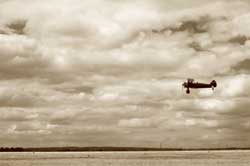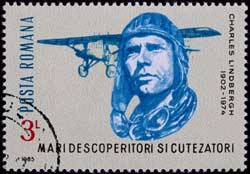History of Air Travel
The history of air travel began with the flight of the Wright brothers on December 17, 1903. Their plane was a powered and controlled aircraft whereas previous attempts to fly used gliders that had control and no power or free flight which had power but no control.
| By being able to combine both, they set the standard in aviation. This led to the creation of heavier than air powered aircraft which played a major role in the military reconnaissance during World War I. Bombers, skirmishers and scouts were flown during the War with legendary dogfights in the sky leading to the intrigue of air travel. |  |
After the First World War, as airplane designs became more reliable and planes larger in size, people and cargo began to be transported in aircraft. One of the most popular aircraft of the time was the Graf Zeppelin which could fly many more miles than the few hundred miles of most major aircraft of the time.
Its demise came on May 6, 1937 when the Hindenburg caught fire and killed 36 people. Attempts have been made to revive this aircraft but exist only in niche markets at this time. The 1920’s and 1930’s saw great progress in the history of air travel.
 |
It was during this time that Charles Lindbergh made his solo flight across the Atlantic Ocean in 1927 and the Douglas DC-3 was built, considered to be the first airliner to carry passengers only and make a profit. The beginning of World War II saw many airports being built in towns and cities with the availability of numerous qualified pilots. |
The first jet aircraft and the first liquid-fueled rockets were some of the innovations in aviation as a result of the War.
After the Second World War, general aviation, particularly in North America, prospered, as pilots numbering in the thousands came out of military service and many types of surplus aircraft from the War became available. The history of air travel grew as light aircraft for the middle class market were developed by such growing manufacturers as Cessna, Piper and Beechcraft.
In the history of air travel, civil air jets were developed by the 1950’s with the first among them being the Boeing 707 passenger jet. Smaller commuter planes also came on the scene with turbo prop propulsion making travel more viable travel for smaller routes with a wider range of weather conditions.
Developments in aviation since the 1960’s have focused not only on aircraft but on instrumentation and control. Airplanes have become more efficient and quieter due to improvements in engines and composite air frames.
The Concorde was developed to make transatlantic flights at the speed of sound and was a product of the British and French governments. It made its last flight in 2003. The cockpits of airplanes have been improved by solid state electronics, satellite communications, small and powerful computers and global positioning systems. These innovations have made it possible for pilots to navigate more accurately and effectively.
In 1978, airline travel was deregulated and airlines were then able set their own routes and prices. This caused an increase in travel among Americans from 205 million in 1975 before deregulation to over 638 million by the year 2000. The development of the airplane has been one of the most important innovations of mankind.
Return from History of Air Travel to Air Travel Tips homepage




